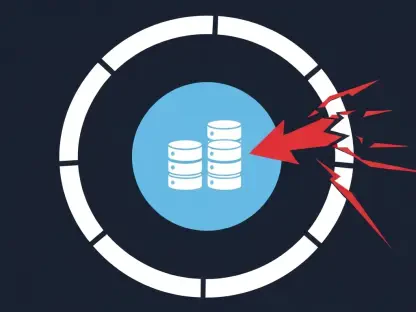In an era where cyber threats evolve at an unprecedented pace, the integration of artificial intelligence into cybersecurity operations has become a focal point for defenders seeking to stay ahead of malicious actors, especially as Security Operations Centers (SOCs) grapple with an overwhelming volume of alerts and increasingly sophisticated attacks. The promise of AI-driven solutions to streamline threat detection and response is tantalizing. Yet, a critical question looms: are current AI models truly equipped to handle the nuanced demands of cybersecurity? Enter CyberSOCEval, a groundbreaking open-source benchmark suite that offers a rigorous framework for evaluating Large Language Models (LLMs) in SOC environments. Developed through a powerful collaboration, this tool is poised to redefine how AI capabilities are measured and improved in the fight against cybercrime, spotlighting gaps and paving the way for innovation.
Unveiling a New Standard in AI Evaluation
Benchmarking AI for Real-World Cybersecurity Challenges
CyberSOCEval emerges as a pioneering initiative, specifically designed to assess the effectiveness of AI in two pivotal areas of cybersecurity: Malware Analysis and Threat Intelligence Reasoning. Unlike previous evaluation tools, this benchmark suite leverages real-world data to simulate the complex scenarios SOC analysts face daily. It provides a standardized method to gauge AI performance, revealing critical insights into how well models interpret intricate data sets and respond to dynamic threats. With a focus on practical application, the framework tests AI systems on their ability to process detailed logs, analyze network traffic, and map attack patterns to established frameworks like MITRE ATT&CK. This comprehensive approach ensures that evaluations are not just theoretical but grounded in the realities of modern cyber defense, offering a clear picture of where AI stands today and where it needs to go.
Addressing the Gap in Current AI Capabilities
The findings from CyberSOCEval paint a sobering picture of AI’s current limitations in cybersecurity tasks. Accuracy rates for LLMs in malware analysis hover between a mere 15% and 28%, while performance in threat intelligence reasoning ranges from 43% to 53%. These statistics highlight a significant disparity between the expectations placed on AI and its actual readiness for SOC environments. Such low success rates underscore the urgent need for specialized development to enhance AI’s ability to tackle cybersecurity-specific challenges. By identifying these shortcomings, CyberSOCEval serves as a wake-up call for developers and practitioners alike, urging a shift toward more targeted training and optimization. The benchmark’s detailed metrics provide a roadmap for improvement, ensuring that future iterations of AI models can better meet the rigorous demands of protecting digital infrastructures.
Driving Progress Through Collaboration and Innovation
Fostering Community Engagement with Open-Source Tools
One of the most transformative aspects of CyberSOCEval lies in its open-source nature, which democratizes access to cutting-edge evaluation tools and encourages widespread collaboration. By making the benchmark suite freely available, it empowers cybersecurity professionals, researchers, and developers to contribute to the refinement of AI models tailored for SOC applications. This communal approach not only accelerates the identification of weaknesses in current systems but also fosters the sharing of best practices and innovative solutions. Practitioners can use the framework to select models best suited for specific tasks, while developers gain valuable insights into areas requiring enhancement. The result is a collective effort to elevate the standard of AI-driven cyber defense, ensuring that advancements are driven by diverse perspectives and real-world needs rather than isolated efforts.
Setting the Stage for Future AI Advancements in Security
Looking beyond the present, CyberSOCEval lays the groundwork for significant strides in AI capabilities for cybersecurity. Its emphasis on multimodal data and complex reasoning tasks, such as analyzing threat actor relationships and intricate attack chains, challenges the industry to rethink how AI is trained and deployed. The benchmark’s inability to see improvements through test-time scaling techniques, which proved effective in other domains, highlights the unique nature of cybersecurity challenges and spurs targeted research. As a result, the framework inspires a wave of innovation, encouraging the development of models with greater contextual understanding and specialized skills. Moving forward, stakeholders should focus on leveraging these insights to build more robust AI tools, prioritizing collaboration and continuous evaluation to ensure that cyber defenses keep pace with evolving threats.









